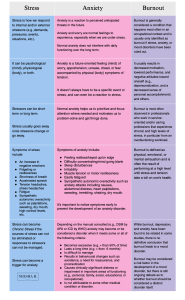It is normal to worry
One of the ways to deal with anxiety is to come to terms with the fact that it is completely normal to experience mild to moderate amounts of anxiety over the course of our lives.
Understandably, there are times that we feel so desperate to get rid of our anxious thoughts and feelings that we really want to believe that someone out there has a magic solution. Surely there is someone who has a trick for making anxiety easy to deal with or for making it go away?
But the truth is there is no trick.
Dealing with anxiety is part of the human experience
For a lot of us, one of the hardest things to do when it comes to dealing with anxiety is to accept that anxiety doesn’t go away – that we can’t, in fact, get rid of difficult thoughts and feelings. It is tough to come to terms with the idea that suffering is part of the human experience.
When we are kids experiencing the feelings most often associated with normal anxiety, for example – worry, fear, and apprehension – there’s a part of us that hopes that as we get older that we will get better at handling those feelings, that we will experience them less, and maybe even completely conquer them.
Does it get easier?
Then we get to adulthood and start to realize that maybe our difficult thoughts and feelings aren’t getting easier to handle, and that maybe in fact they are getting harder to handle, because the further we get into adulthood, the more responsibilities we have. And of course, the more responsibilities we have, the more we have to worry about.
But there is often still that little part of us – the part we’ve had in us since we were little – that holds out hope that things will get easier, that someone will reveal the secret behind how to deal with stress and anxiety.
The mind is a threat detector
The fact is that it is perfectly normal to experience difficult thoughts and feelings – this is part of being human. Our mind has evolved to protect us, and one of the ways it protects us is by helping us detect and respond to threats. And so when we worry or feel fear or apprehension – that is our mind putting us on alert. The tricky part sometimes is do we use those feelings to detect potential problems and be ready to solve them, or do we let those feelings shut us down so that we do nothing and are paralyzed by our anxiety?
What we resist, persists
Suffering is a normal part of the universal human experience, and when we try to fight that, well, as Carl Jung is known for saying, “what you resist, persists.” So sometimes the first step is to become aware of our resistance so that we can stop resisting, drop the struggle, and move towards learning more useful ways of dealing with our anxiety.






